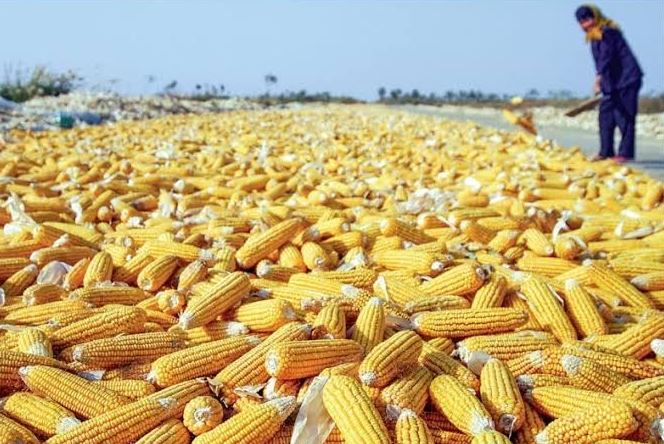By Spy Uganda
Ugandan maize, sorghum and groundnuts contain 10 times or higher concentrations of aflatoxin than the safety threshold recommended by the World Health Organisation (WHO), scientists at the National Agricultural Research Organisation (NARO), have said.
News about the higher concentrations of potentially cancer-causing contaminants in indigenous foods is a health concern because maize meals, for instance, are a mainstay for millions of Ugandan families and a more dominant diet at schools.
The government scientists, in conjunction with the International Institute of Tropical Agriculture, conducted research to ascertain the aflatoxin content in the cereals from 2007 to 2023. The study involved examining both the soil and grains.
“We got both good and bad fungi. When you have a high concentration of good fungus, it displaces the bad one in a process known as competitive exclusion and this is the principle we used to develop aflasafe,” Dr Asea said in reference to a biological product used to reduce aflatoxins.
“Uganda produces about five million metric tonnes of grain per year and from the research, samples of these grains contain up to 100 parts per billion of aflatoxins, which is higher than that recommended by WHO (10 parts per billion),” Dr Asea explained.
Prof Archileo Kaaya, the head of the department of food technology and nutrition at Makerere University, said this type of fungi, if present, can grow onto the food, feed on it then produce waste products so when you eat the food, you may suffer food intoxication.
“Aflatoxins are, therefore, a type of toxins that are produced by molds. They are a highly toxic and carcinogenic compound produced by the fungi Aspergillus flavus,” he said.
Having higher levels of aflatoxin contamination in grains and other agricultural products has both economic and health impacts to the country.
Many countries that we export to can reject our agricultural produce like what happened to our maize export to Kenya in 2021.
“It is hard to completely eliminate aflatoxins given the high temperature and humidity as in Uganda and the surrounding countries but there is a standardized limit, which is 10 parts per billion (ppb) amount of produce for East Africa and that of Europe (4ppb),” Prof Kaaya said.
The agriculture products from Uganda, however, are usually between 100 and 700ppb. Prof Kaaya said over 600,000 metric tonnes of maize exports to Kenya were rejected in 2021 over similar concerns.
When the produce is rejected at the export market, it is supposed to be destroyed because it is not safe for consumption but people do not want to make losses, so they sell it to the local population.
Amanda Tumwebaze, a nutritionist at Human Mechanic Physiotherapy Ltd, said if one consumes food that has very high levels of aflatoxins, they can suffer acute toxicity.
In 2004, 125 people in Kenya died and others were hospitalized after they reportedly consumed maize contaminated with Aspergillus flavus.
In June 2016, 20 people in central Tanzania died of acute toxicity after eating molded maize and 48 people were hospitalized.
The cases of toxicity present with jaundice, abdominal pain, vomiting, diarrhea and ascites (the accumulation of fluid in the peritoneal cavity, causing abdominal swelling).
Consuming foods containing aflatoxins exposes an individual to chronic toxicity, which is likely to cause cancer, especially of the liver, the commonest caused by aflatoxin.
The toxins can cause stunting in infants. In Uganda, about 29 percent of children below five years are reported to have stunted growth as a result of eating foods containing aflatoxins. However, this percentage rises to 51 in Buhweju District.
Aflatoxins also deny the body essential nutrients such as zinc, iron, proteins and some vitamins, thereby lowering its immunity and causing kwashiorkor in children.
“The toxins can also cross the placental barrier in expectant mothers to affect the unborn child. By the time the child is born, it is contaminated with aflatoxins and if the mother keeps eating the same food, her milk will also contain the toxins so the baby’s first 1,000 days are all contaminated,” Prof Kaaya said.
“Unfortunately, aflatoxins cannot be seen by our eyes, unless one has tested the grains,” Dr Asea said, adding,
“So it may be hard to identify them when the produce is on the market. Procurement officers in schools and bakeries should ensure the grains they are procuring suit the Uganda National Bureau of Standards (UNBS) standards. They should be stored in well-aerated stores.”
Depending on the diet and the health conditions such as hepatitis, repeated intake of aflatoxins can cause accumulation and, therefore, cause cancer over a short period of time.





